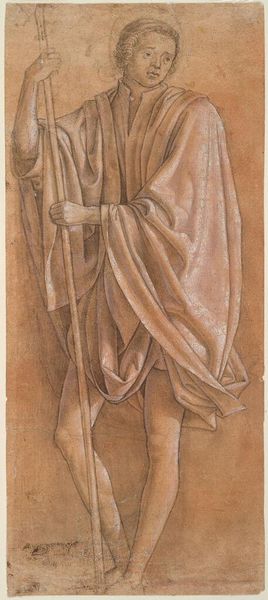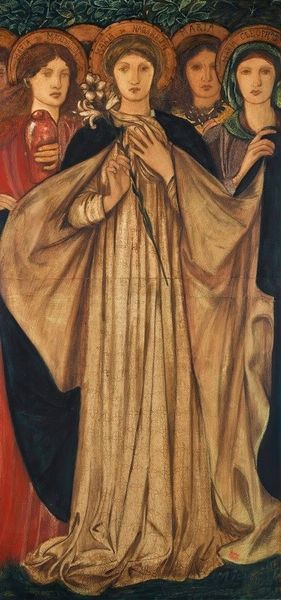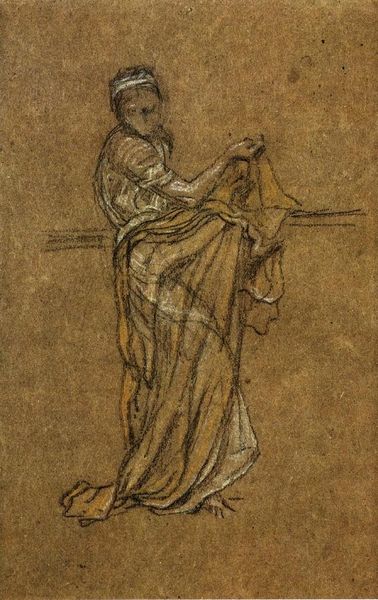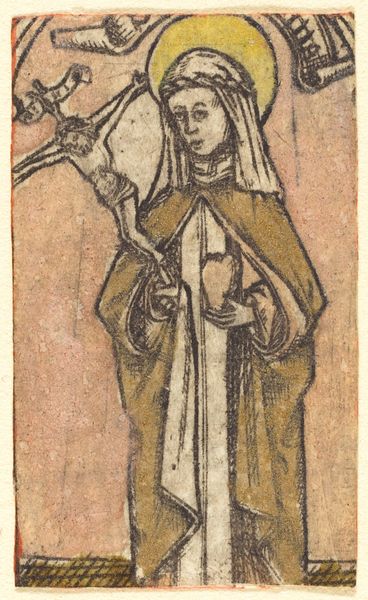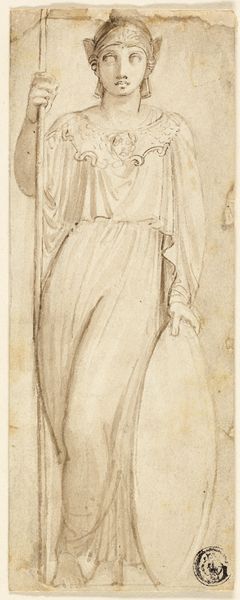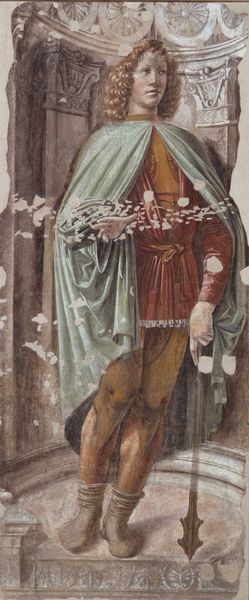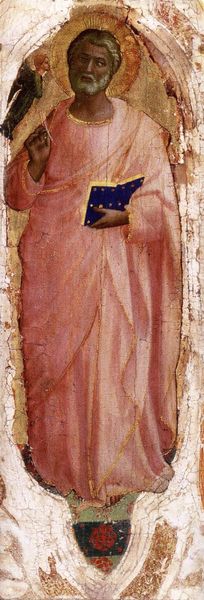
Copyright: Public Domain: Artvee
Curator: The first thing I notice is this muted palette. There's a beautiful somber quality, but punctuated with moments of starker color, and a vulnerability about this lone figure. Editor: Precisely! Let's bring everyone in on this dreamscape. Here we have James Abbott McNeill Whistler’s “The Purple Iris," rendered in 1871. It's a stunning figurative portrait done in pastel, and its constrained scale contributes so much to the image. Curator: Right, pastel! You almost miss that texture at first glance. But with that choice, the subject—I’m fascinated by the way the woman's gaze is cast downward, the iris almost mirroring her introspection. What cultural touchstones do you see here? Editor: The bent head suggests sorrow. But is it genuine, or performed? And the red cloth feels both decorative, as part of an elaborate, romantic sensibility, and potentially as an emblem of suffering. Like a mourning cloth or a signifier of clandestine behavior in the red-light districts, perhaps? The flowers mirror the shape of her figure, they echo and anchor her presence on the field. Curator: Yes! But I think there’s also this very conscious flatness at play. See how Whistler refuses a really deep illusion of space? It makes the whole thing feel...deliberately staged. Like a memory playing out on a proscenium. Editor: Good eye! That staged quality makes it a meditation. An almost allegorical figure amidst flowers – so we're in the terrain of memento mori. Each element, like a word, signifies deeper concepts about how art confronts human emotion through aesthetic symbolization. Curator: Absolutely, I'm taken by how much feeling, how much story he can pack into something so visually concise. It has the emotional depth of an epic but the impact of a haiku. Editor: And, you know, to connect it to a broader context: The pastel lends itself perfectly to an artist grappling with fleeting sensations and hidden truths about a figure in the center of its pictorial space. The color and form both emphasize how visual codes, such as clothing and botanical symbols, can shape interpretations in our artwork, for centuries to come.
Comments
No comments
Be the first to comment and join the conversation on the ultimate creative platform.

